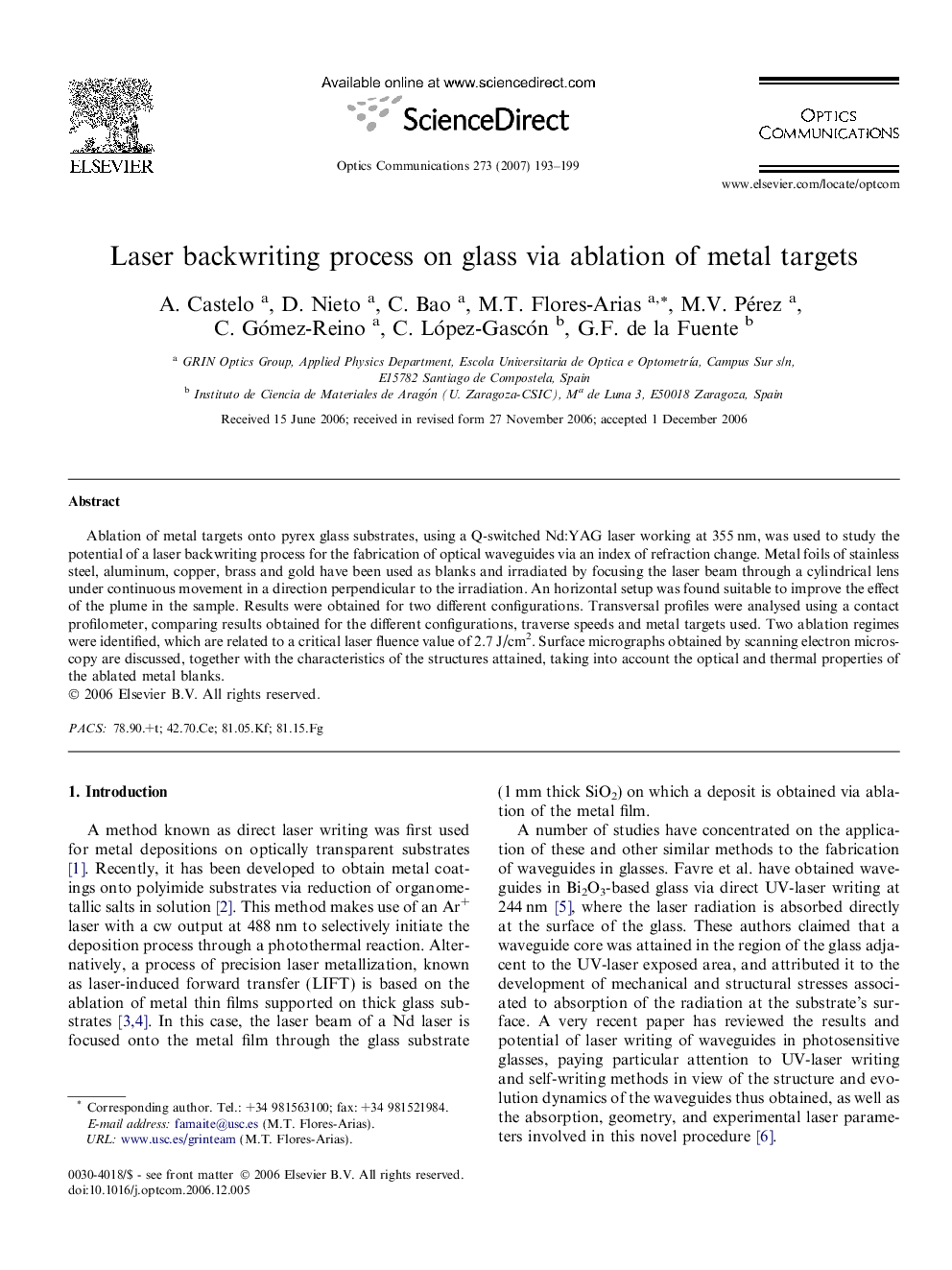| Article ID | Journal | Published Year | Pages | File Type |
|---|---|---|---|---|
| 1542371 | Optics Communications | 2007 | 7 Pages |
Abstract
Ablation of metal targets onto pyrex glass substrates, using a Q-switched Nd:YAG laser working at 355Â nm, was used to study the potential of a laser backwriting process for the fabrication of optical waveguides via an index of refraction change. Metal foils of stainless steel, aluminum, copper, brass and gold have been used as blanks and irradiated by focusing the laser beam through a cylindrical lens under continuous movement in a direction perpendicular to the irradiation. An horizontal setup was found suitable to improve the effect of the plume in the sample. Results were obtained for two different configurations. Transversal profiles were analysed using a contact profilometer, comparing results obtained for the different configurations, traverse speeds and metal targets used. Two ablation regimes were identified, which are related to a critical laser fluence value of 2.7Â J/cm2. Surface micrographs obtained by scanning electron microscopy are discussed, together with the characteristics of the structures attained, taking into account the optical and thermal properties of the ablated metal blanks.
Related Topics
Physical Sciences and Engineering
Materials Science
Electronic, Optical and Magnetic Materials
Authors
A. Castelo, D. Nieto, C. Bao, M.T. Flores-Arias, M.V. Pérez, C. Gómez-Reino, C. López-Gascón, G.F. de la Fuente,
